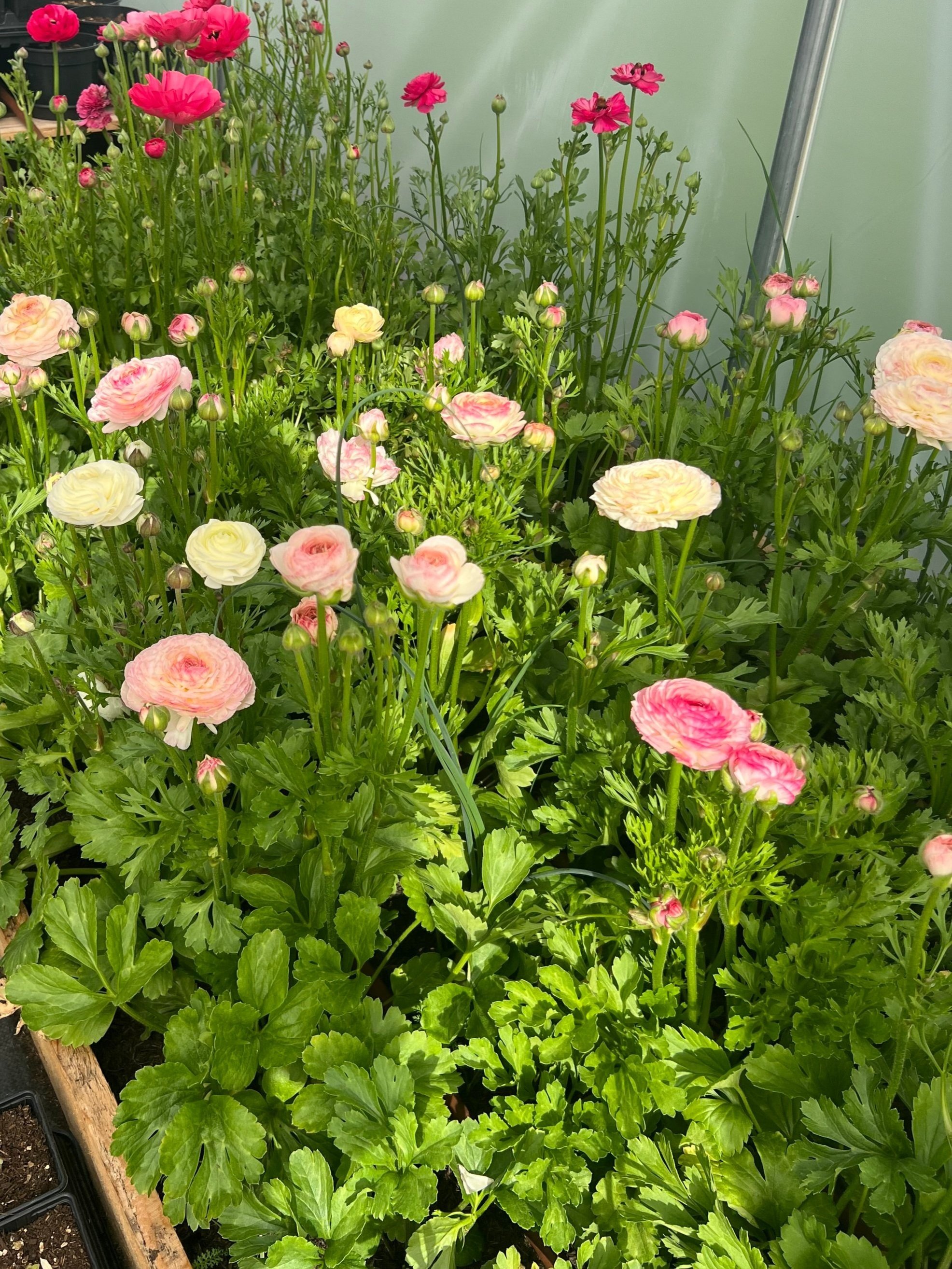How to grow ranunculus
The first year I grew ranunculus, barely anything even sprouted. I think I overwatered and they rotted. The second year, I did better. Last year, with a few refinements, was a bumper crop. I’m trying the same approach this year and we’ll see how it goes. Here’s what I’m doing.
Why grow ranunculus?
Ranunculus, or Persian buttercups, are truly beautiful focal flowers, come in a wide variety of colours, have a vase life of 10-12 days, and best of all, bloom from as early as mid-April and for four to eight weeks.
Buying ranunculus corms
Ranunculus corms are pricey. Expect to pay anywhere from about 30p to 70p a corm. And, while technically a perennial, you can only really use them once for cut flowers. We have saved and replanted corms from previous years, but the flowers never seem as big or vibrant.
The plain colours – pink, red, white and yellow – are cheapest, but they’re nowhere near as lovely as the Italian ‘Elegance’ or ‘Cloni’ varieties.
Most people buy next year’s corms around April and May when their ranunculus are sprouting, rather than risk their favourites selling out. These will then get delivered in the autumn. But, if you can wait until December, you can often find them on sale with a third, or sometimes half off.
Most regular suppliers, will be selling bulbs in a small 2/3 or 3/4 size. Specialist suppliers often sell bigger 4/5 or 5/7 size. Even from the smaller corms, you should get around five stems a plant at least.
They’re easy to store until you need them - just put them somewhere cool and dry.
When to plant ranunculus
Corm suppliers advise planting your corms in the autumn or the spring.
I’ve never tried to over winter corms outside – it’s just too big of an outlay to risk. Last year, I started our first succession in January, and got flowers in the polytunnel in mid-April, and outside under cover towards the end of May. This year we’re seeing what happens if we start indoors in November. And we’ll sow successions through until April.
We’ll plant some in the polytunnel and bring some on in 9cm pots to plant out in covered beds from end February / mid March.
Soak your corms first
When you get your corms, they’ll be dry and dehydrated so you’ll need to soak them for at least three hours first.
I use the net bags you get in supermarkets to keep the different varieties separate whilst soaking.
I also pop in a cheap fish tank air pump. The extra oxygenation is supposed to help.
Pre-sprout your ranunculus corms
Because of past failures, I pre-sprout my corms indoors so I know what I’ve got growing. It also stops the mice eating them.
Line a seed tray about a third full with compost and put corms on top, claws down. You can put them pretty close, because you’re only pre-sprouting, not growing them here. I put about 30 in each tray. Cover them in compost and give them a light water. Put them somewhere cool and dark.
They should sprout after about 10 days, and be large enough to plant into pots or the polytunnel after a couple of weeks. Don’t keep them inside too long.
Space ranunculus plants 22cm apart
I plant ranunculus 22cm apart. Up until about a month before last frost, this is direct or in pots in the polytunnel. Within a month of last frost, I plant them outside covered in a covered tunnel.
Even in the polytunnel, if it’s going to freeze, I cover them in frost cloth.
Water them regularly, keeping the soil slightly moist, but not too wet or the roots will rot. Ideally via drip lines, definitely not over the flowers.
Aphids can be an issue. I’ve tried companion planting with allium and / or chives - the onion smell helps to repel insects. Not sure if it works but I haven’t had an aphid issue yet.
We haven’t added any feed to date, but lots of people do. So this year, we’ll be trying a fortnightly feed of organic liquid fertiliser, higher in nitrogen initially, then higher in potassium once buds form.
How to harvest ranunculus
For cut flowers, you want to cut your ranunculus before the flower opens, when the bud feels like a marshmallow - not completely firm and a bit squishy.
Cut the stem at the base to encourage more blooms.
Bulb to Bunch | Beautiful, locally-grown flowers and foliage, available as bouquets, in buckets and wholesale, plus gifts and more
www.bulbtobunch.com




